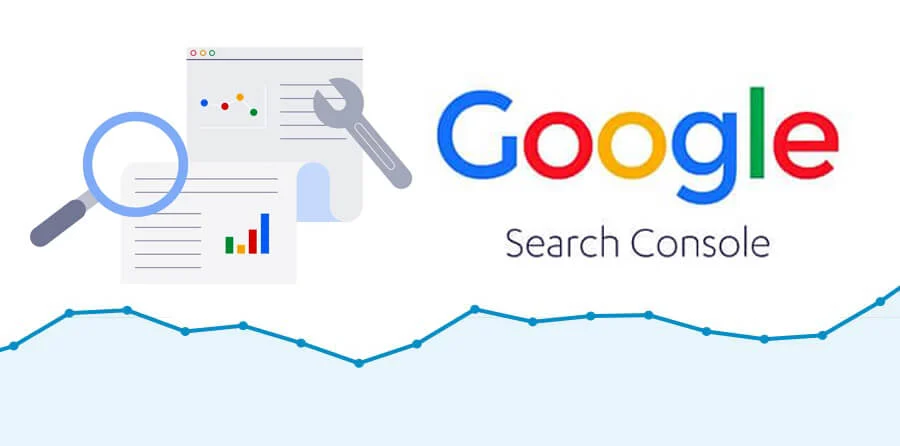
Google Search Console Features
Google Search Console (GSC) is an essential tool that helps website owners, SEO specialists, and digital marketers understand how their website is performing in Google Search results. It is an advanced, free platform offered by Google, packed with valuable insights that can help improve a site’s visibility, ranking, and overall user experience. In this article, we will delve into what Google Search Console is and explore its comprehensive features, providing actionable insights to enhance your SEO strategies.
Understanding Google Search Console
Google Search Console, formerly known as Google Webmaster Tools, is a free service provided by Google that allows you to monitor, maintain, and troubleshoot your site’s presence in Google Search results. It is an indispensable resource for tracking how Google views your site and identifying areas that need optimization.
Who Can Use Google Search Console?
The platform is beneficial for anyone who has a website or is involved in managing SEO, including:
- Website owners who want to maintain and monitor their site’s performance in search results.
- SEO professionals focused on improving search engine rankings.
- Web developers who want to fix technical issues like crawl errors or mobile usability.
- Marketers interested in tracking organic traffic data and optimizing content.
Key Features of Google Search Console
Google Search Console offers a variety of powerful features designed to help you improve your site’s SEO performance and identify critical issues. Let’s break down the most important features:
1. Performance Report
One of the core features of GSC is the Performance Report, which provides detailed data on how your site performs in Google Search. This includes information on:
- Impressions: The number of times a URL from your site appeared in search results.
- Clicks: The number of times users clicked on your URLs from the search results.
- Click-Through Rate (CTR): The percentage of impressions that resulted in clicks.
- Average Position: The average ranking of your URLs in search results for specific keywords.
With this data, you can analyze which keywords are driving traffic, which pages are performing well, and where there’s room for improvement. Identifying top-performing queries and optimizing content for those can help improve your site’s search visibility.
2. URL Inspection Tool
The URL Inspection Tool is invaluable for diagnosing issues on specific pages of your site. By using this feature, you can:
- Check if a URL is indexed by Google and eligible to appear in search results.
- See any indexing issues or warnings that need attention.
- Request reindexing of a page after making changes or updates.
This tool gives insight into how Google crawls and renders a particular page, helping you make adjustments to improve search visibility.
3. Coverage Report
The Coverage Report highlights any indexing issues across your website. It provides a detailed analysis of the pages that have been successfully indexed, those that are excluded, and any errors that need to be addressed. Common issues include:
- 404 errors: Pages not found.
- Crawl anomalies: Errors that occurred while Google was trying to crawl your site.
- Server errors: Google was unable to reach your server.
Fixing these errors is critical because they can negatively affect your site’s search rankings.
4. Sitemap Submission
Submitting a sitemap via Google Search Console is a crucial step to ensure that Google can easily find and index all the important pages on your site. A sitemap is an XML file that lists all the URLs on your site that you want search engines to crawl. By submitting it through GSC, you help Google discover your content more efficiently, improving the chances of getting indexed quickly and accurately.
5. Mobile Usability
With Google prioritizing mobile-first indexing, the Mobile Usability Report is an essential feature that highlights any mobile-related issues on your site. Google Search Console checks if your website is mobile-friendly and points out any usability issues that might affect your ranking, such as:
- Text too small to read.
- Clickable elements too close together.
- Content wider than the screen.
Ensuring a mobile-friendly experience is crucial, especially as more users access the web via mobile devices.
6. Core Web Vitals
Google has introduced Core Web Vitals as part of its ranking factors, and GSC provides a detailed report on these metrics. Core Web Vitals measure the overall user experience based on three key factors:
- Largest Contentful Paint (LCP): Measures how long it takes for the largest content element to load.
- First Input Delay (FID): Measures the time it takes for a page to become interactive.
- Cumulative Layout Shift (CLS): Measures visual stability, ensuring that elements on the page don’t shift unexpectedly during loading.
Monitoring and optimizing these metrics helps ensure that your site provides a fast and smooth user experience, which can positively impact your ranking in search results.
7. Enhancements Reports
These reports cover various aspects of your site’s structure and content that can be improved. Some of the key reports include:
- AMP (Accelerated Mobile Pages) Status: If you use AMP, this report will highlight any issues with your AMP pages.
- Breadcrumbs: Ensure that your breadcrumbs are implemented correctly, providing a clear navigation path for users and search engines.
- Rich Results: Check if your structured data is working as intended and if you’re eligible for rich snippets in search results.
8. Security Issues & Manual Actions
Google Search Console also alerts you to any security issues such as malware, hacked content, or phishing that may impact your website’s ranking and trustworthiness. Similarly, it notifies you of any manual actions taken against your site for violating Google’s guidelines, giving you the opportunity to resolve the issue and request reconsideration.
9. Links Report
Backlinks remain a crucial part of SEO, and the Links Report in GSC provides insights into:
- External links: Websites that link to your site.
- Internal links: Pages on your site that link to other pages on your site.
- Top linking sites: Domains that send the most backlinks.
- Top linked pages: The pages on your site with the most backlinks.
This data can be used to strengthen your link-building strategy and ensure that your site maintains a healthy link profile, which is vital for SEO success.
How to Make the Most of Google Search Console
To maximize the benefits of GSC, it’s essential to regularly monitor your site’s performance, address any issues flagged by the tool, and use the data to inform your SEO strategy. Here are some best practices:
- Check performance metrics frequently: Regularly review the Performance Report to track which keywords are bringing traffic and adjust your content strategy accordingly.
- Fix errors promptly: Address any crawl, indexing, or mobile usability errors as soon as they appear to avoid negative impacts on your rankings.
- Optimize for mobile and Core Web Vitals: Ensure your site is mobile-friendly and meets the thresholds for Core Web Vitals to improve user experience and search ranking.
- Monitor backlinks: Keep an eye on your site’s backlink profile and build quality links from authoritative sites.
Google Search Console is a powerful tool that, when used effectively, can significantly improve your site’s SEO performance. By taking advantage of its features, you can optimize your site, fix errors, and gain valuable insights into how Google views your content.






